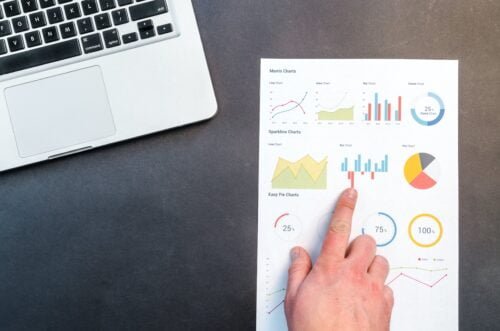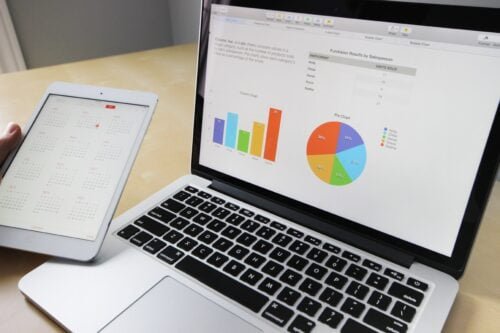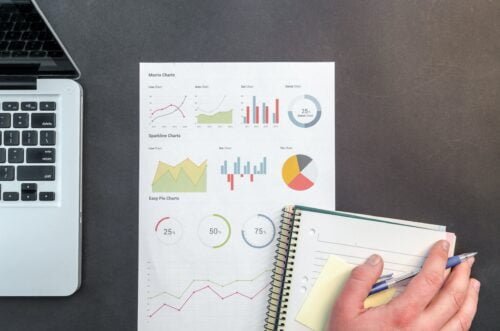In the realm of market research, consumer surveys have long been a popular tool for organizations seeking insights into consumer preferences and behaviors. However, it is crucial to recognize that while consumer surveys offer valuable data, there are potential drawbacks associated with their use in forecasting. This article examines the disadvantages of relying solely on consumer surveys for making accurate forecasts and highlights the limitations that organizations must be mindful of when utilizing survey data in their decision-making processes. Through a comprehensive analysis of these disadvantages, businesses can gain a nuanced understanding of the potential pitfalls and make more informed choices when using consumer surveys for forecasting purposes.
Disadvantages of Using Consumer Surveys for Forecasting
In the realm of market research and forecasting, consumer surveys are commonly used to gather valuable insights and understand trends. However, it is essential to recognize that there are several disadvantages associated with relying solely on consumer surveys for forecasting purposes. This article aims to shed light on these drawbacks, highlighting their potential implications and suggesting alternative approaches to ensure more accurate and comprehensive forecasts.
1. Sampling Bias
1.1 Voluntary response bias
Consumer surveys often suffer from voluntary response bias, where individuals who choose to participate may not be representative of the entire population. This bias arises because respondents willingly share their opinions, while those who are indifferent or have diverse perspectives may choose not to participate. Consequently, the resulting data may not accurately reflect the true sentiments of the target population.
1.2 Self-selection bias
Similar to voluntary response bias, self-selection bias occurs when individuals actively choose to participate or decline the survey. This bias introduces the potential for respondents with specific characteristics or opinions to dominate the survey results, skewing the overall findings. The exclusion of certain segments of the population can limit the reliability and generalizability of the forecasted outcomes.
1.3 Nonresponse bias
Nonresponse bias poses another challenge in consumer surveys for forecasting. It refers to the notion that individuals who choose not to participate in the survey may differ systematically from those who do participate. This bias can arise due to various factors, such as lack of interest, time constraints, or skepticism regarding the survey’s purpose. The absence of responses from certain groups may result in an incomplete and potentially biased sample, inadvertently leading to inaccurate forecasts.

2. Lack of Accuracy
Consumer surveys rely on individuals’ ability to accurately report their preferences, behaviors, and intentions. However, several factors can compromise the accuracy of these self-reported responses. Respondents may provide socially desirable answers to conform to societal norms, leading to inflated or distorted data. Moreover, memory bias, misinterpretation of questions, and limited cognitive abilities can further contribute to erroneous responses. Consequently, forecasts based solely on consumer surveys may lack the necessary precision and reliability required for effective decision-making.
3. Limited Scope
While consumer surveys offer valuable insights into consumer preferences and trends, they inherently possess a limited scope due to their nature. Surveys typically focus on specific aspects or variables, which may not capture the entirety of the factors influencing consumer behavior and market dynamics. This limited scope could lead to oversimplified forecasts, failing to account for the multifaceted and interconnected nature of the market.

4. Social Desirability Bias
Consumer surveys often suffer from social desirability bias, where respondents tend to provide answers that adhere to social norms or portray themselves in a favorable light. This bias can result in respondents underreporting certain behaviors or sharing responses that are perceived as more socially acceptable. Inaccurate information stemming from social desirability bias can significantly impact the quality of forecasts, leading to misguided conclusions and ineffective strategies.
5. Limited Time Frame
Consumer surveys typically capture insights from a specific point in time. While this may be suitable for short-term forecasting, it can be problematic when predicting longer-term trends and market dynamics. Consumer preferences and behaviors are subject to change over time, influenced by various external factors. Thus, solely relying on survey data collected at a particular moment may fail to account for the evolving landscape, rendering the forecasts incomplete or outdated.

6. Potential for Misinterpretation
Interpreting survey responses accurately and extracting meaningful insights require considerable expertise and experience. Without proper analysis and interpretation, survey data can be misinterpreted or misused, leading to erroneous conclusions and ineffective forecasting outcomes. The potential for misinterpretation underscores the need for skilled professionals to handle survey data and derive dependable forecasts from the information gathered.
7. Cost and Resources
Conducting consumer surveys demands significant financial resources and time investment. From survey design and implementation to data collection and analysis, every step of the process incurs costs. Furthermore, acquiring a representative sample can be challenging and requires additional resources. This financial burden, coupled with the necessity for skilled personnel, can be prohibitive for organizations with limited budgets or time constraints, potentially hindering their ability to rely solely on surveys for accurate forecasting.
8. Potential for Manipulation
Consumer surveys are susceptible to manipulation, whether intentional or unintentional. Respondents may falsify their answers based on their personal motivations, leading to biased data. Additionally, survey design, question wording, and order of questions can inadvertently influence respondents’ responses, altering the survey’s outcome. These manipulations can introduce inaccuracies and distortions, undermining the reliability of the forecasts derived from the survey results.
9. Inability to Account for External Factors
Consumer surveys typically focus on understanding consumer opinions, behaviors, and preferences, often neglecting external factors that significantly impact the market. Economic conditions, political events, technological advancements, and competitive landscape changes can shape consumer behavior and market trends. Thus, relying solely on consumer surveys may overlook these critical external factors, reducing the accuracy and relevance of the forecasts generated.
In conclusion, while consumer surveys serve as valuable tools for understanding consumer preferences, relying solely on them for forecasting possesses several disadvantages. Sampling bias, limited accuracy, scope, and timeframe, social desirability bias, potential for misinterpretation, cost implications, susceptibility to manipulation, and failure to account for external factors all contribute to the limitations of consumer surveys for forecasting purposes. To ensure more comprehensive and accurate forecasting, organizations should consider combining surveys with other research methodologies and data sources, enabling a more holistic understanding of market dynamics and consumer behavior.
